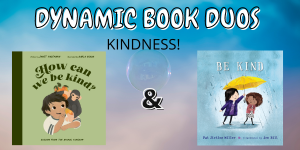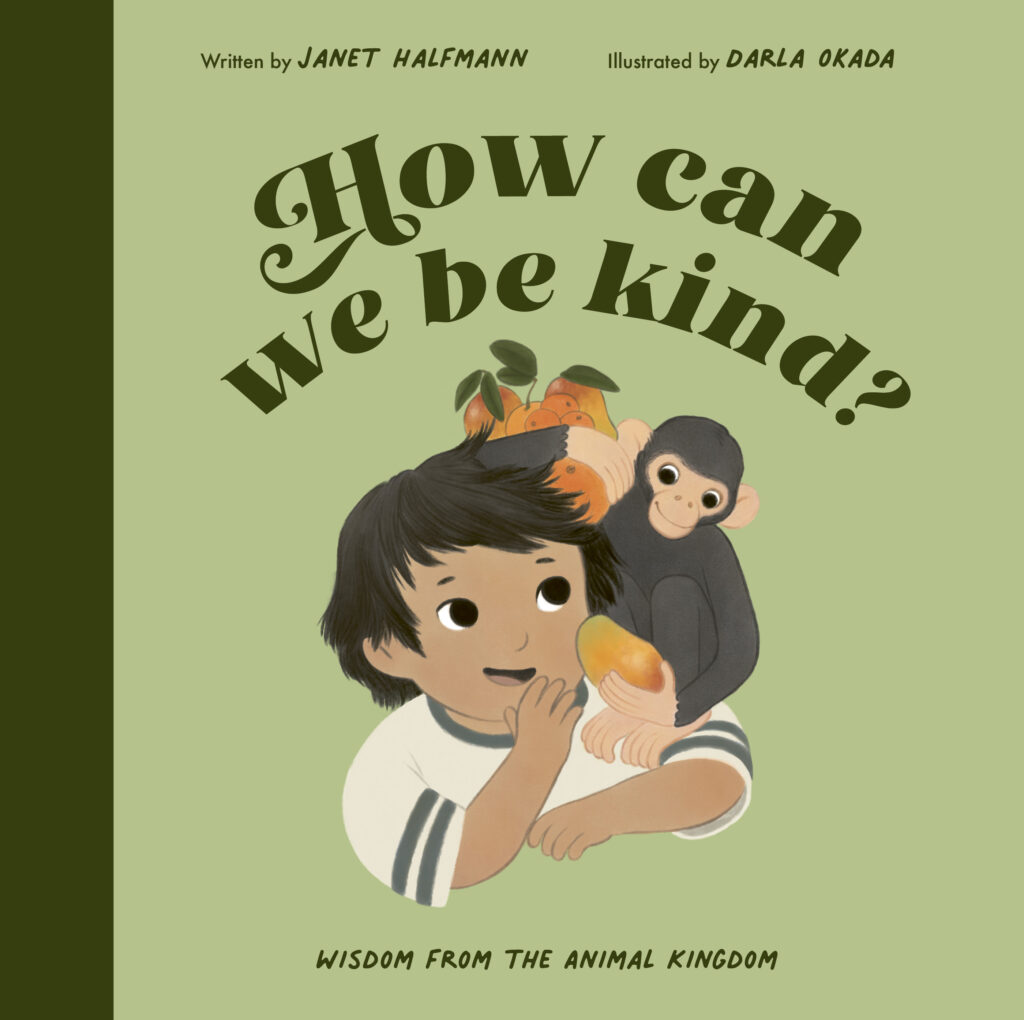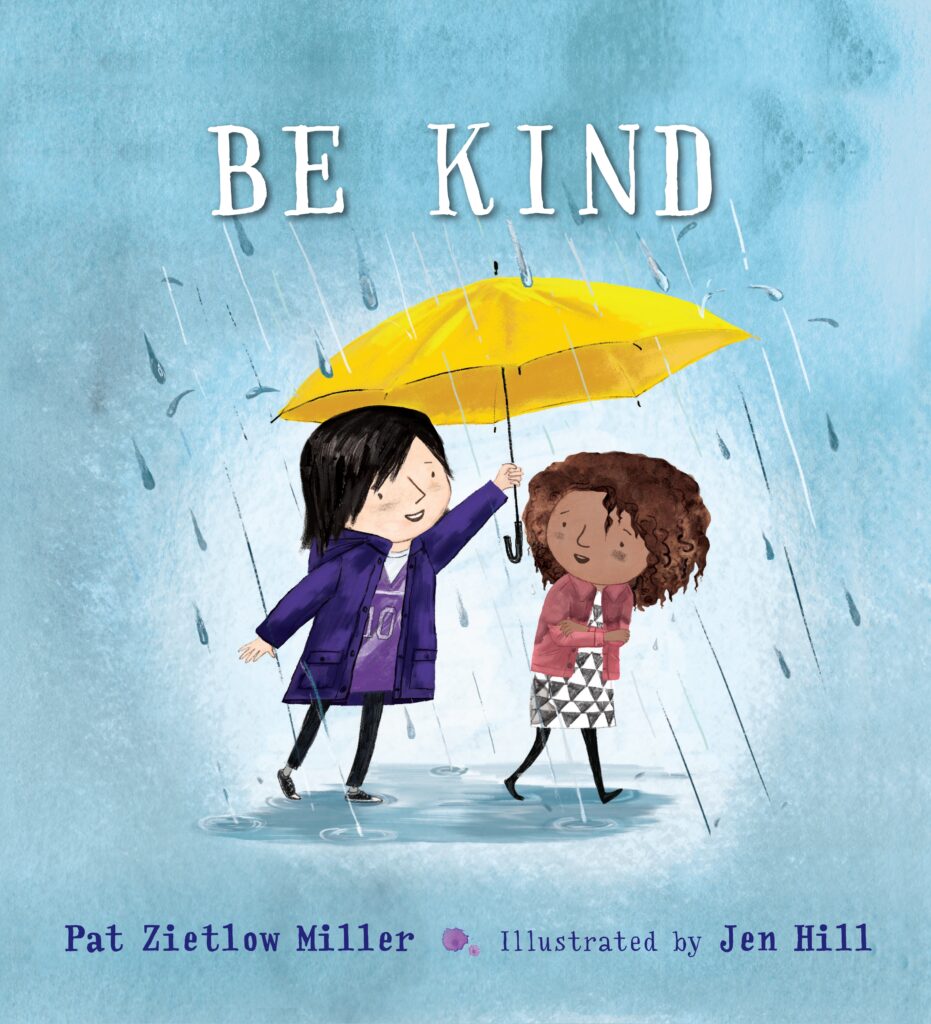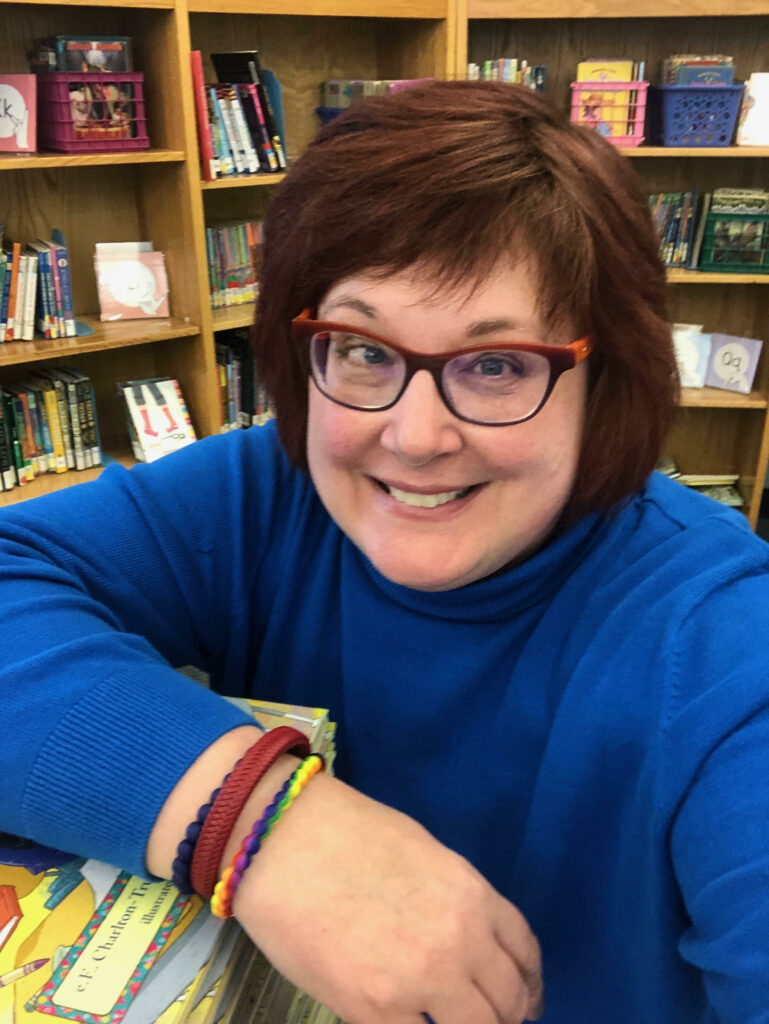
Please welcome author Janet Halfmann and author Pat Zietlow Miller to Dynamic Book Duos – a blog featuring two books that pair together in a meaningful way along with educational activities to strengthen reading skills. The theme for this week’s Dynamic Book Duos Paring is kindness.
PERFECT PAIR: Kindness
How Can We Be Kind? written by Janet Halfmann and illustrated by Darla Okada and Be Kind written by Pat Zietlow Miller and illustrated by Jen Hill show simple everyday ways to be kind, and that small ways of being kind can be very important. Both books also show that kindness extends far and wide, way beyond one’s neighborhood. Both books are for preschool to grade 1.
Book 1: How Can We Be Kind?

This special book asks children a simple question: How Can We Be Kind? The answer: by learning from the animals. Animals show kindness and empathy toward each other, and care and compassion can be seen throughout the natural world.
Like animals, children can be welcoming like capybaras, who let other animals sit on top of them. Or like elephants they can wait for those that aren’t as fast, or like zebras they can stick up for their friends.
This sweet and thoughtful book is both a celebration of the animal world and an invitation for being kind in everyday life. Back matter has facts about how each animal lives with and looks after its fellow creatures.
Book 2: Be Kind

What does it mean to be kind?
When Tanisha spills grape juice all over her new dress, her classmate wants to make her feel better, wondering: What does it mean to be kind?
From asking the new girl to play to standing up for someone being bullied, this moving story explores what kindness is, and how any act, big or small, can make a difference. Or at least help a friend. With gentle text from the award-winning author of Sophie’s Squash and irresistible art, Be Kind – a New York Times bestselling title – is an unforgettable story about how two simple words can change the world.
Educational Activities:
Activities for How Can We Be Kind?
Kindness Pet Rocks. After talking about ways to be kind, have the kids paint stones and glue on googly eyes to make pet rocks. Write the kids’ choices of kind behaviors on the rocks.
Fall Kindness Tree. Talk about ways to be kind, then write the words on leaves the kids have decorated to put on a tree. Each day, have everyone practice the behavior on one leaf chosen to fall from the tree.
Animal Kindness Plays. After reading How Can We Be Kind? have kids form groups and act out the animal behaviors in the book. After each “show,” have the kids talk about how the kind behavior they saw made them feel or how they could imitate it.
Compliments Are Nice! Take turns having everyone say something nice about the person standing or sitting nearest to them.
Kindness Stories. Have kids tell stories of real or make-believe characters doing something nice for someone else.
Gifts of Kindness. Help kids make flowers, cards, or other creations to give to someone.
Activities for Be Kind
Be inspired by Be Kind
As the main character in Be Kind discovers, small acts of kindness can add up to something BIG.
Readers can realize all the ways they are – or can be – kind every day by writing ways to be kind. They can list kind things they’ve done themselves or kind things others have done for them on small paper strips. Then, they can connect them all to form a paper chain.
If everyone in the school does this – students, teachers, staff, administrators – you’ll end up with a long chain that really illustrates the impact small acts of kindness can have.
You could also use the same concept by having readers draw pictures of kindness in action and creating a wall collage.
Activities for Both Books:
Sharing Kindness Sightings. Both Be Kind and How Can We Be Kind? show simple everyday ways everyone can be kind. Have the kids watch closely an entire day for the kind and caring behaviors they see people and animals do, or that they do themselves. Then the next day, invite them to tell the class about the experience.
Discussion Questions
How would you classify each story (fiction, nonfiction, informational fiction) and why?
How do the kind things people do in Be Kind compare to what animals do in How Can We Be Kind?
Is it easier for animals to be kind? Or people? Why?
Think about times you’ve tried to be kind:
Why did you decide to be kind?
What did you do?
Which times were easy? Which times were harder?
Did the situations always work out the way you wanted them to?
Sometimes you might do something kind and immediately know the difference it made. Other times, you might never find out the result of your kindness. Does that matter?
Meet the Authors:


Janet Halmfnann
16 Oct 2023Thanks so much for offering Pat and I the opportunity to share and pair our books. This blog with its many great educational activities for extending the books is a goldmine for educators of all kinds!
Suzanne Jacobs Lipshaw
17 Oct 2023Thank you for not only being a contributor to the blog but a Dynamic Book Duos cheerleader!